After 10 consecutive months looking back over the past century of motorcycling as part of our MC100 celebration, let’s shift our gaze ahead and look to the future of our favorite sport. In many ways, it’s already upon us. As one example, elsewhere in this issue you’ll read about the smartest production motorcycle ever built—BMW’s S1000RR HP4—equipped with traction control, wheelie control, launch control, anti-lock brakes and the world’s first dynamically adaptive, auto-adjusting electronic suspension.
Sophisticated technology that makes riding safer and more enjoyable, new vehicle designs that make two-wheeled travel more practical and accessible to an even wider range of people, and entirely new propulsion technologies are just the beginning the changes coming. The sport of motorcycling will evolve in other significant ways in the coming decades, including the development of a “smart” transportation grid populated by vehicles driving themselves and new vehicle shapes and configurations that challenge the very notion of what a “motorcycle” is.
To get a bead on the future, we asked the brightest minds in our industry—designers, product planners, engineers, and trend spotters— to give us a glimpse of the future as they see it. We asked them a single question: “What will motorcycling look like 50 years from now?” As you will see, their answers are stunningly diverse. If they’re right, the next 50 years look to be every bit as dynamic, revolutionary, challenging and fun as the last 100 have been.
David Robb, Owner, Designing Things that Move You (Former BMW Design Chief)
If you’re expecting a singular “bike of the future” in Tomorrowland, sorry—that ain’t gonna happen. Our myriad tastes and desires will be satisfied by an almost unlimited array of machinery. The look? Everything from Hummer-like security to Tron Light Cycle sophistication to traditional naked bike architecture in homage to the 1950s and ‘60s. Three- and even four-wheeled “tilting vehicles” will continue to draw newbies who appreciate the fun and excitement of leaning with added stability, especially at stop lights. The same appeal will make these new vehicles equally attractive to older, “former motorcyclists,” too.
Ridership will increase because individuals will want a more engaging alternative to a daily commute in a “living room on wheels.” Motorcycling will transition from the pure leisure sport it’s been for more than 50 years into an appealing practicality. With the rising cost of fuel increasingly determining what we drive (and ride), many will find motorcycles intriguing not only for their tiny traffic footprint but their reduced carbon footprint as well.
Safety and performance enhancements will become totally non-intrusive and expected in every class of vehicle. Macho claims of “outbraking any ABS,” will be quaint anecdotes of the past. The democracy of high-tech will make new riders feel welcome. Connectivity at all times will be expected as well. All systems—navigational, infotainment or performance-oriented—will be voice controlled and intuitive of our needs, allowing us to enjoy the ride without distraction. Enhanced protective riding gear will be integrated with the vehicle, and audio and visual information will be piped into your helmet to enhance environmental and situational awareness.
Michael Czysz, CEO and Founder, MotoCzysz
Fifty years from now, the MotoGP grid will be all-electric. Today’s most advanced electric motors are already better than current MotoGP engines in terms of torque delivery, physical size, engine-braking control and reduced gyroscopic/handling impact. In 50 years, it will not even be close.
Where batteries are concerned, charge time will become equal to fill time for gas bikes. Battery energy density may increase two times or even four times in 50 years, but the real breakthrough will be in charging. Carbonized nano-graphite networks, which emulate the structure of bone marrow, will dramatically increase battery surface area and reduce full-charging intervals to minutes, or possibly even seconds.
Bikes will roll on self-healing tires. High frequency, ultrasonic tire warmers will trigger engineered molecules in the rubber to flow from areas of high density to areas of low density. The result will be a tire that can heal itself from cold tears, harsh abuse and uneven wearing to look like new for the next track session.
Aerodynamics will play a more important role as energy consumption will be continually reduced. Fairings that change shape to offer maximum benefit in a variety of conditions will be necessary to maintain performance while reducing consumption.
Finally, Kenny Roberts will still be faster than you on an XR100 around a backyard dirt track!
John Keogh, Principal, Joh Keogh Motorcycle Design
What is interesting from a design point of view is to ask “What will motorcycles look like 50 years from now?” I can see three general types: 1) A commuter featuring a wrap-around safety cage and some form of outriggers or gyro-stabilization for when it’s stationary; 2) A fun motorcycle, with the emphasis on not just riding but also tinkering and customizing. These bikes will have small hybrid powertrains that, via electronics, can be highly customized much as you would add apps to a smart phone now. 3) A bullet-shaped racer with cutting-edge aerodynamics and electronics to allow a new type of racing on two wheels, where electronics enable even better competition by having exploitable parameters that can turn this “pod” from straight-line speed merchant to wheelie-capable stunt rocket. Rider skill, of course, will still rule.
Chris Hunter, Owner/Editor BikeEXIF.com
It’s tempting to conjure images of levitating machines and whisper-quiet electric marvels, but I think the machines of 2062 will bear a strong resemblance to those we ride today. Fifty years ago people were riding Triumph Bonnevilles, BSA Gold Stars and Harley Ironhead Sportsters. They’re essentially the same as today’s bikes: the same engine technology, the same basic components in the same locations, and similar frames.
There have been gradual improvements in engine efficiency, component design and frame materials, but it’s an evolution. Clever marketing has made these incremental improvements seem significant. We’ll see more gradual improvements, with increasing focus on electronic control. But the bikes themselves will look and feel largely the same. Motor-cycling’s simpler pleasures will be stronger than ever.
Scot Harden, VP of Marketing, Zero Motorcycles
Electric motorcycles will become a major player in the motorcycle market. The technology is already relevant, and the improvements we over the next 50 years will be astounding. Energy costs, non-existent powertrain maintenance, low emissions, and the way the rider interfaces with the machine—and fellow enthusiasts—through personal communications devices all favor electric motorcycles. As technology improves, electric bikes will go farther, faster, and, most importantly, be more fun to ride than traditional motorcycles.
James Parker, Industrial Designer, Radd Technologies
The motorcycle industry is built on three foundations: ideas, money, and “stuff.” Ideas and money are self-explanatory. Stuff is everything from infrastructure to raw materials to the material we get most of our energy from: petroleum. For the first 100 years, motorcycling thrived on plenty of ideas, money, and oil. There will always be good ideas, but will there be enough money and stuff to support them? It’s likely that we’ll see shortages and difficulties we’re not used to. Motorcycles may have to be adapted to conditions that are currently hard to imagine.
Gary Gray, Director of Motorcycle Product Planning, Polaris/Indian/Victory
When we think about motorcycles today we think about Japanese sportbikes, American cruisers, and European adventure-tourers. Fifty years from now, trends will be dictated by India, China, and Brazil, where more than 25 million motorcycles are already sold each year. As those economies mature, the motorcycles they ride will change from economical transportation to larger-displacement, recreational machines. By virtue of the sheer size of their markets, they will dictate industry trends.
Derek Brooks, Motorcycle Product Planning Manager, Yamaha Motor Corp. USA
The future of motorcycles? Soon Yamaha’s hover-cycle will break cover, and dominate all forms of motorcycling, especially Supercross. All kidding aside, I would like to see more people recognize the benefit of parking their car in favor of riding a motorcycle that gets 40-50 mpg, or a scooter that gets 130 mpg. So much attention is paid to hybrid and high-mileage internal-combustion autos, many of which get worse mileage than any $8000 motorcycle.
Pierre Terblanche, Freelance Motorcycle Designer [Former Ducati Design Chief]
Fifty years is a very long time. I really have no idea what technologies will be used in the future, or even what bikes will look like, but I do know how I would like them to function. I believe that the various current segments of hypersport, standard and multipurpose bikes will morph into more sophisticated, unified-function products capable of fantastic performance no matter how or where they are used. New-look products will be beautiful, ecological, powerful and lightweight, with automatic gearboxes, adjustable ergonomics, and full integration of communication systems and Internet, along with active and passive safety systems. We will also find built-in 3D video cameras so experiences can be shared after the ride, and all this will come without interfering with the fun factor of riding a motorcycle.
Craig Vetter, Inventor, Designer, Manufacturer
Western civilization has become dependent upon cheap and abundant energy. We like acceleration. We like speed. We like power. But there is a very real possibility that fuel will become a precious commodity in the next 50 years.
In the current Vetter Fuel Economy Challenges, we have learned that a streamlined motorcycle producing around 24 horsepower will allow a gallon of fuel to take us more than 100 miles at any speed legal in America. Less horsepower and we cannot maintain the posted speeds; more and we are wasting fuel. If energy ever becomes precious, this is how motorcycles will look.
Streamlined motorcycles are more practical too. You can sit up comfortably and still be protected from the wind and elements. You can carry four bags of groceries and it's more visible in traffic, so it’s safer, too. The best part is, you can build the bike of the future yourself, today.
Will Motorcycles One Day Ride Themselves?
Google has already built a fleet of self-driving cars that have logged thousands of accident-free miles, and BMW’s Research and Technology group—among others—are building autonomous automobiles. BMW’s ConnectedRide initiative is the first attempt to use that technology to dramatically improve motorcycle safety.
The ConnectedRide-equipped K1600GT incorporates collision detection, pedestrian detection, roadway obstacle detection and weather warnings. There’s even a “left-turn assistant” that uses a combination of cameras, laser scanners, radar and vehicle-to-vehicle communications to detect a car making a potentially dangerous left turn in front of the rider. When this situation arises, a “conspicuity enhancement program” can flash the bike’s lights and sound the horn, or even activate the wayward car’s brakes.
Thankfully, the idea of a truly autonomous motorcycle seems far-fetched right now—there are numerous technical challenges, not the least of which is staying upright while stopped. Self-driving cars will almost certainly be a reality soon, however, and more and more of the safety technologies devised for autonomous vehicles will be adapted to motorcycles, too.
Electric Experiments From Honda and Kawasaki
Words: Ben Purvis
Photo: Honda
Despite a reputation for embracing the latest technology, Japan’s legacy OEMs appear to be left behind in the race to electrify their two-wheeled products. But recently leaked patent documents show both Honda and Kawasaki have been beavering away on electric superbikes.
With a history of electric and hybrid automobile technology to draw from, Honda has a head start. We’re already familiar with Honda’s gorgeous RC-E electric superbike that debuted as a concept at the 2011 Tokyo Motor Show. New patents reveal development of a production RC-E with the electric motor and batteries combined into a single unit to centralize mass, simplify maintenance and aid cooling.
Meanwhile, Kawasaki appears hard at work on an eSuperbike, too, with patents revealing two designs. The first is a full-on, aluminum-framed electric superbike, while the second is along the lines of a battery-powered, tube-framed ER-6. Both use a similar water-cooled electric motor bolted—unusually—to a traditional motorcycle-style, four-speed transmission.
Evidence of this development shows, as many have suggested, that the major legacy OEMs are just biding time until economic circumstances and worldwide demand align to make electric motorcycles a profitable proposition.
BMW Anticipates a Crowded Future
BMW tells us more than 50 percent of the world’s population already lives in cities, and that figure is anticipated to rise as high as 70 percent over the next 25 years. Urban crowding, increasing traffic density, rising energy costs and more stringent emissions regulations will all drive demand for scooters, making the so-called “Urban Mobility” category the most important segment of the motorcycle industry in coming years.
BMW’s newly-released C-series scooters can handle both urban riding and a typical high-speed, longer-distance suburban commute. With automatic transmissions and lower, more inviting architecture, however, there is also less of the perceived danger that’s often attached to motorcycles. BMW hopes this unique combination of attributes will encourage more drivers to park their automobiles and set out on two wheels.
BMW has also revealed a zero-emissions electric scooter prototype called the Concept E. With outright bans on petrol-powered scooters and motorcycles in parts of Beijing and other polluted Asian cities, BMW sees clean vehicle technology as a priority for the future.
Yamaha’s Tilting Tesseract Concept
Words: Ben Purvis Photo: Yamaha
Yamaha’s radical Tesseract—a leaning, four-wheeled superbike revealed in 2007—is still undergoing development, and recent patent documents suggest the Japanese firm is serious about bring this envelope-pushing concept into production. The latest design shares the Tesseract’s basic concept, combining a bike-like riding experience with the security of four wheels, but uses completely different technology to achieve that goal. Unlike the original Tesseract, which added stability by placing the paired wheels at both ends some distance apart, the new Yamaha has been designed to keep the wheels as close together as possible, retaining the narrow overall width of a conventional bike.
All four wheels move independently, so even at extreme lean angles all the tyres are firmly planted on the ground. Although the appearance might be unusual, the design is intended to keep the riding experience as familiar as possible. If it’s aimed at motorcyclists, rather than the undefined and entirely new audience that the Tesseract seemed designed to appeal to, that additional familiarity is likely a boon rather than a hindrance.
The Best of Both Worlds?
Words: Ben Purvis
Photo: Yamaha
Hybrid automobiles combine the cleanliness of an electric vehicle with the convenience of gas power, but the added complexity and expense has prevented hybrid technology being applied to production motorcycles. Even so, Honda and Yamaha have been experimenting with hybrids.
Honda has filed multiple patents showing a parallel twin similar to the NC700 engine—already its most fuel-efficient engine—with a regen-enabled electric motor added to boost range or provide additional torque to increase the bike’s performance. Another newly filed document also shows a hybrid Goldwing, using an ingenious, hub-mounted electric motor to assist its ICE counterpart.
Yamaha appears to be developing an all-new hybrid machine based on the envelope-pushing Gen-Ryu concept from 2005 (shown) using a small, single-cylinder gas engine to turn a generator that powers an electric motor and recharges the batteries. The resulting efficiency is that of a small-displacement single but with performance of a much more powerful bike.










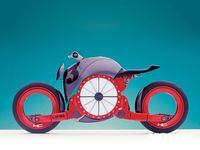

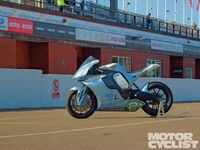



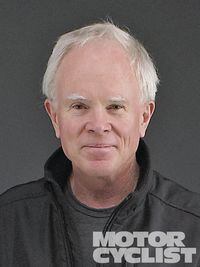







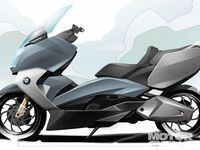
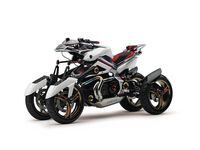

/cloudfront-us-east-1.images.arcpublishing.com/octane/ITNLTIU5QZARHO733XP4EBTNVE.jpg)
/cloudfront-us-east-1.images.arcpublishing.com/octane/VZZXJQ6U3FESFPZCBVXKFSUG4A.jpg)
/cloudfront-us-east-1.images.arcpublishing.com/octane/QCZEPHQAMRHZPLHTDJBIJVWL3M.jpg)
/cloudfront-us-east-1.images.arcpublishing.com/octane/HXOUJXQWA5HBHGRO3EMJIGFMVI.jpg)

/cloudfront-us-east-1.images.arcpublishing.com/octane/3TIWWRV4JBBOLDVGRYECVVTA7Y.jpg)
/cloudfront-us-east-1.images.arcpublishing.com/octane/KIX5O23D5NAIBGFXBN3327DKZU.jpg)
/cloudfront-us-east-1.images.arcpublishing.com/octane/7GJYDUIPXRGMTMQKN6ONYOLBOU.jpg)
/cloudfront-us-east-1.images.arcpublishing.com/octane/MUQLOVLL2ZDGFH25ILABNBXKTI.jpg)
/cloudfront-us-east-1.images.arcpublishing.com/octane/TNOU5DNE2BC57MFPMGN2EIDXAM.jpg)
/cloudfront-us-east-1.images.arcpublishing.com/octane/GTCXACQGJ5HAPDTGWUQKDEH44E.jpg)
/cloudfront-us-east-1.images.arcpublishing.com/octane/S35YGSEMEZB4BLTDJTSZPF4GLA.jpg)
/cloudfront-us-east-1.images.arcpublishing.com/octane/5UOT6HPX2JFMRJAX6EH45AR4MQ.jpg)
/cloudfront-us-east-1.images.arcpublishing.com/octane/OKWOJWAKP5EP3OACCRRWPCIX2Q.jpg)
/cloudfront-us-east-1.images.arcpublishing.com/octane/2WF3SCE3NFBQXLDNJM7KMXA45E.jpg)
/cloudfront-us-east-1.images.arcpublishing.com/octane/G4MG6OUCJNBSHIS2MVVOTPX65E.jpg)
/cloudfront-us-east-1.images.arcpublishing.com/octane/IIGGWFOTOJGB7DB6DGBXCCMTDY.jpg)
/cloudfront-us-east-1.images.arcpublishing.com/octane/QSTCM6AVEZA5JJBUXNIQ3DSOF4.jpg)
/cloudfront-us-east-1.images.arcpublishing.com/octane/U4I7G625B5DMLF2DVIJDFZVV6M.jpg)
/cloudfront-us-east-1.images.arcpublishing.com/octane/B6XD6LS6IVCQPIU6HXDJSM3FHY.jpg)
/cloudfront-us-east-1.images.arcpublishing.com/octane/ICL63FEDDRDTTMINYICCEYGMDA.jpg)
/cloudfront-us-east-1.images.arcpublishing.com/octane/FCGZHQXRBZFLBAPC5SDIQLVF4I.jpg)
/cloudfront-us-east-1.images.arcpublishing.com/octane/WNOB6LDOIFFHJKPSVIWDYUGOPM.jpg)
